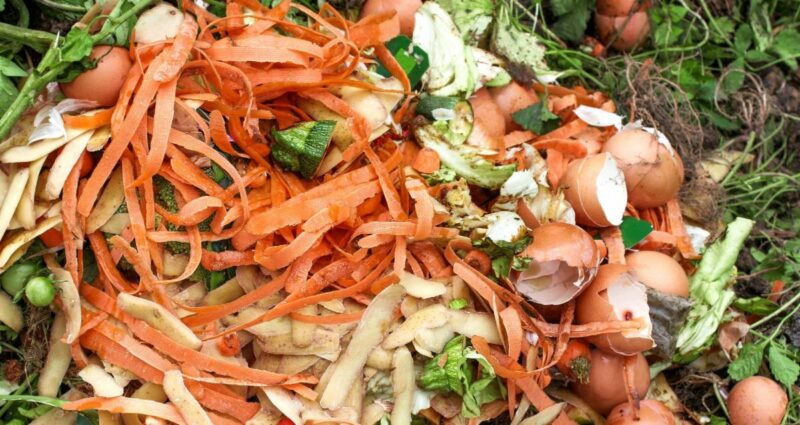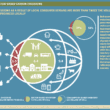Editor’s Note: The following story first appeared in The Maine Monitor’s free environmental newsletter, Climate Monitor, that is delivered to inboxes for free every Friday morning. Sign up for the free newsletter to get more important environmental news from reporter Kate Cough by registering here.
I am fascinated by trash. How much of it we make, where it goes, the infrastructure required to dispose of it — I think the way we produce and manage our waste speaks volumes about our values as a society. Our system works better than many: absent a garbage strike, most Americans are not forced to live with much more than a week’s worth of their own refuse, and many cities and towns even offer curbside pickup, sparing residents the trip to the transfer station and the accompanying olfactory assault.
But Mainers have been generating trash at higher and higher rates in recent years: from 1,080 pounds per person in 2017 to 1,260 pounds per person in 2019, a 17% increase. We continue to struggle to meet recycling targets, and the data is so incomplete that state officials lack a clear understanding of where changes are needed.
Collection of electronic waste, some of the most environmentally toxic (and valuable!) stuff around, dropped precipitously during the pandemic, and the state has no idea what percentage of e-waste is actually being collected. And Maine’s landfills are increasingly filling up: of the eight licensed to accept municipal solid waste, four will be full in less than fifteen years unless they are expanded.
The Maine Department of Environmental Protection is hoping to make a dent in some of that trash, in part by supporting programs that divert waste from being landfilled or burned for energy. To that end, the Department announced its spring 2022 Waste Diversion Grant award recipients, choosing six projects, with awards ranging from $25,000 to $40,000, for a total of $182,227.
Any public or private entity can apply for the awards, which prioritize projects that divert solid waste from being landfilled or burned for energy. The money for the biennial awards comes primarily from fees on disposing of certain types of waste, like construction and demolition debris, as well as from fees for licensing and reporting.
Of the six awards, four are focused on composting, and with good reason: between 97 and 99% of food waste in Maine is landfilled, Susanne Lee, a faculty fellow at the University of Maine’s Mitchell Center for Sustainability, told Maine Public last year.
A lot of that food hasn’t even been opened, Ryan Parker, Maine program associate director for FoodCorps, told Monitor columnist Marina Schauffler in March. “It’s incredibly inefficient and makes zero sense,” said Parker. “We haven’t done anything to move things up to the higher levels of the (food recovery) hierarchy… The top tier is where we should be focusing.”
And then there’s the food that doesn’t get distributed in the first place: a survey conducted by Food Rescue MAINE, an action campaign launched last year by the Mitchell Center, found that Maine farmers typically have too much food, with 90% of fruit and vegetable farmers surveyed reporting that they have a surplus “always/every year.”
The United States Department of Agriculture estimates that between 30 and 40% of food grown never leaves the farm, either because machinery isn’t available for harvesting, the food isn’t up to spec, or it can’t be stored long enough to make it to households.
Groups around the state, including the six awarded grants this year, are looking for solutions to the problem, which became more visible during the pandemic, with supply chain backups leaving shelves periodically bare. The war in Ukraine has compounded the issue, sparking rising food prices and exposing gaps in the world’s food supply.
Yet while we struggle with high prices and bare shelves, wasted food remains the number one material entering landfills, Angel Veza of ReFED told the virtual summit crowd in April. “It consumes crop land and fresh water, and it’s responsible for four percent of the greenhouse gas emissions just in the U.S.”
Maine wasted more than 200,000 tons of food in 2019, said Veza, most of it at the residential level. “That’s us, that’s you and me, consumers waste the most food, illustrating a critical need for us to change our behaviors.”
But there could be a silver lining in all of this recent upheaval, said Lee. “Maybe this is an opportunity for us to come together and turn some of the bad news into good news by focusing on some of the solutions for food waste, which are ultimately solutions to improve our food system.”
To read the full edition of this newsletter, see Climate Monitor: trash talk.
Kate Cough covers climate change and the environment for The Maine Monitor. Reach her by email with ideas for other stories at kate@themainemonitor.org.





